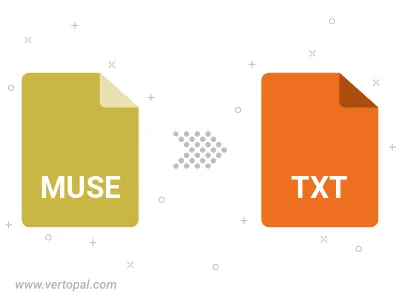Convert MUSE to TXT CREOLE
Convert MUSE markup documents to TXT CREOLE format, edit and optimize documents online and free.

The MUSE file extension, part of the Amuse Markup Language, is used for documents formatted with AmuseWiki. It simplifies document creation by using contextual markup rules for formatting. Developed by John Wiegley and maintained by Michael Olson, it aims to make document creation more intuitive. The extension is primarily used for creating and managing wiki pages and other text documents.
The TXT file extension represents Creole Markup Language (CML), which is a lightweight markup language designed to standardize wiki syntax, facilitating content transfer between different wiki engines. Conceived during the 2006 International Symposium on Wikis, Creole amalgamates common elements from major wiki engines, with MediaWiki's syntax often used as a fallback. Released as version 1.0 on July 4, 2007, Creole is supported by various wiki platforms, including Bitbucket wikis and Moodle. It simplifies content creation and editing across diverse wiki environments.
Click the Choose File button to select the MUSE file.
For an advanced conversion, use the MUSE to TXT CREOLE optional tools available on the preview page and click the Convert button.
When the conversion status changes to successful, click on the Download button to get the final TXT CREOLE markup document.

To change MUSE format to TXT CREOLE, upload your MUSE file to proceed to the preview page. Use any available tools if you want to edit and manipulate your MUSE file. Click on the convert button and wait for the convert to complete. Download the converted TXT CREOLE file afterward.
Follow steps below if you have installed Vertopal CLI on your macOS system.
cd to MUSE file location or include path to your input file.Follow steps below if you have installed Vertopal CLI on your Windows system.
cd to MUSE file location or include path to your input file.Follow steps below if you have installed Vertopal CLI on your Linux system.
cd to MUSE file location or include path to your input file.